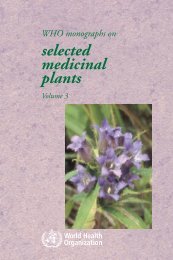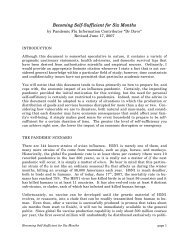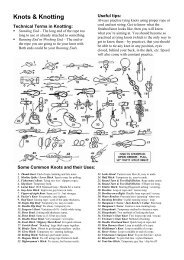Create successful ePaper yourself
Turn your PDF publications into a flip-book with our unique Google optimized e-Paper software.
Black Spore Print<br />
GENUS Coprinus<br />
Some authors state that the generic name Coprinus is derived<br />
from a word meaning dung and that it refers to the habit of several<br />
species that grow almost exclusively upon dung. Thomas,<br />
however, in the Field Book of <strong>Common</strong> Gilled <strong>Mushrooms</strong> (see<br />
page 119) states that the word means filthy and probably refers<br />
to the transformation of the gills into a slimy liquid. The genus is<br />
characterized (i) by black spores and (2) by a unique method<br />
of liberating these spores. The gills are so close together that<br />
they almost touch, and it is doubtful if many spores could be<br />
liberated were it not for the fact that the gills liquefy; this seems<br />
to occur through a process of autodigestion, the fungus producing<br />
enzymes that digest the cells of the gills and cap. This liquefaction<br />
begins at the bottom edge of the gills and progresses upward,<br />
the cap widening out gradually and the gills separating<br />
slightly during the process. The spores mature and are liberated<br />
just ahead of the advancing zone of liquefaction and thus float<br />
away in the air, although many are found in the liquid also.<br />
All the common large species of Coprinus are edible, being of<br />
good flavor and very delicate texture. (A word of caution, however:<br />
some people have become ill from eating Coprinus after<br />
taking only a small alcoholic drink.) Their only drawback is that<br />
they must be picked before they mature and used almost at once.<br />
Since after they once appear above the ground they mature in a<br />
few hours to a day, one must practically be on the spot when they<br />
come up. If they are kept for more than a few hours after picking,<br />
one has, instead of mushrooms, a watery black mess.<br />
Eminently edible: COPRINUS ATRAMENTARIUS<br />
(Inky Cap)<br />
This species (Figure 49) is somewhat less common than the<br />
two following but is still found frequently enough to deserve inclusion<br />
here, especially since it is also of choice quality.<br />
80
















